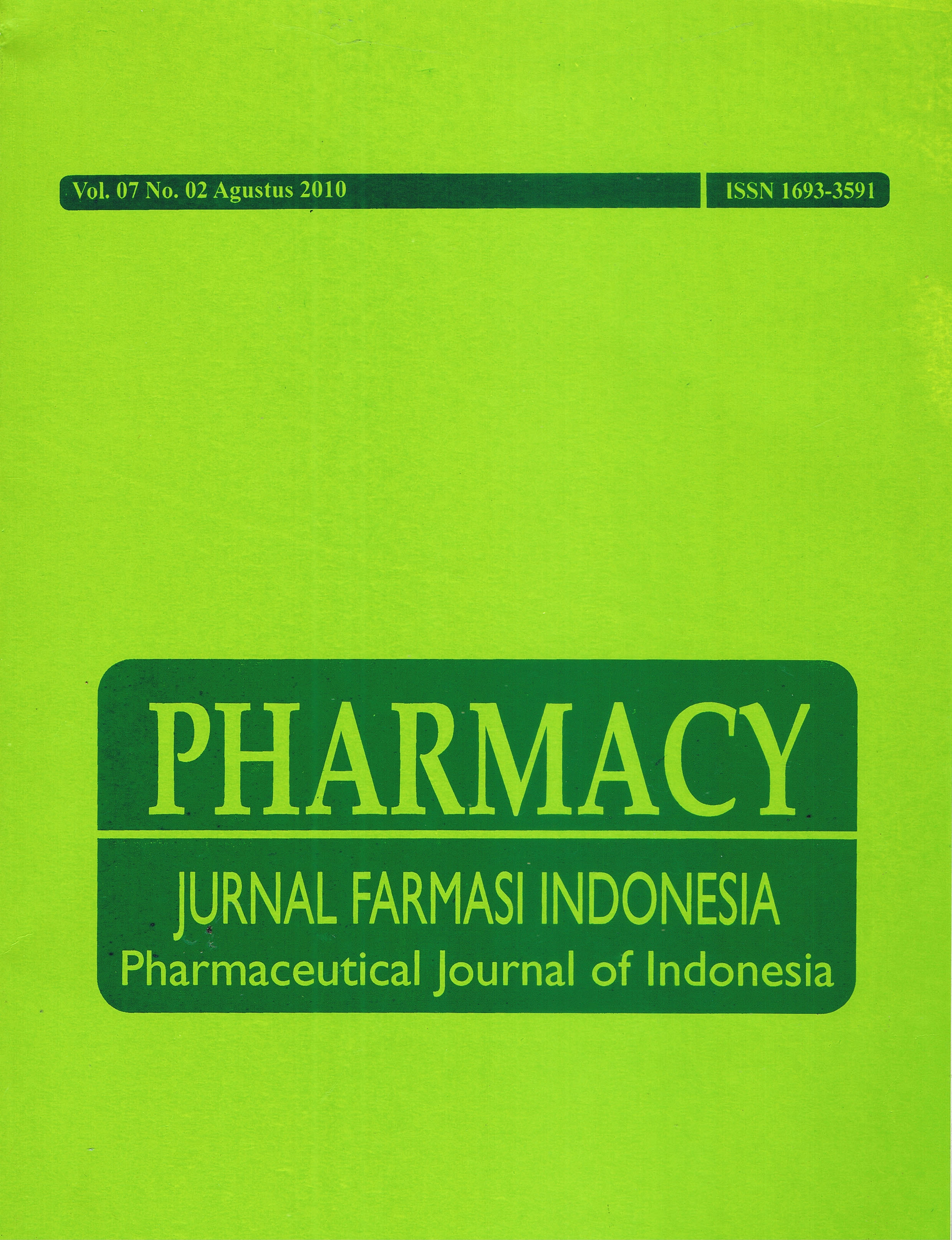IDENTIFIKASI DRUG RELATED PROBLEMS (DRPs) PENGOBATAN TUBERKULOSIS PADA PASIEN RAWAT JALAN DI RSUD KARDINAH KOTA TEGAL TAHUN 2009
DOI:
https://doi.org/10.30595/pji.v7i3.575Abstract
ABSTRAK Tuberkulosis merupakan masalah kesehatan global yang memerlukan penanggulangan yang baik dan tepat. Pengobatan tuberkulosis memerlukan lebih banyak obat dalam terapi sehingga memperbesar kemungkinan terjadinya Drug Related Problems (DRPs). Penelitian ini bertujuan untuk mengetahui adanya DRPs yang terjadi pada pengobatan tuberkulosis (TB) yang meliputi obat salah, dosis berlebih, dosis kurang dan interaksi obat. Penelitian ini bersifat retrospektif dan dilakukan pada 170 pasien dengan diagnosis TB di instalasi rawat jalan poli paru RSUD Kardinah Tegal selama bulan Januari-Desember 2009. Data yang diperoleh dianalisis dengan analisis deskriptif. Hasil penelitian menunjukkan bahwa jenis DRPs yang paling banyak terjadi adalah interaksi obat terjadi pada 98,24%, DRPs yang lain berturut-turut adalah berupa obat salah sebanyak 52,94%, dosis kurang sebanyak 29,41% dan dosis berlebih sebanyak 1,76%. Dari hasil penelitian disimpulkan bahwa terdapat banyak kesalahan yang akan menimbulkan masalah pada pengobatan tuberculosis. Kata kunci : tuberkulosis, DRPs, obat salah, dosis berlebih, dosis kurang, interaksi obat. ABSTRACT Tuberculosis is a global health problem that needs to be overcome well and appropriately. The tuberculosis treatment needs more drugs of therapy so it causes Drug Related Problems (DRPs). The aim of this research was to explore the DRPs in the tuberculosis treatment covers wrong drug, over dosage, sub therapy dosage and drug interaction. This research was retrospectively and applicated to 170 patients of out patients in RSUD Kardinah Tegal during January-December 2009. Appropriate descriptive analysis was used. The results showed that unnecessary drug interaction 98,24%, the other DRPs were wrong drug (52,94%), sub therapy dosage (29,41%) and over dosage (1,76%). According to the results of this research can be concluded that there are many mistakes which will cause problem in tuberculosis treatment. Key words : tuberculosis, DRPs, wrong drug, over dosage, sub therapy dosage, drug interaction.References
Bahar A. 2001. Pengobatan Tuberkulosis Mutakhir, dalam Buku Ajar Ilmu Penyakit Dalam, Jilid 2, Edisi III, Balai Penerbit Fakultas Kedokteran UI, Jakarta.
[Depkes] Departemen Kesehatan RI. 2007 Pedoman Nasional Penanggulangan Tuberkulosis. Jakarta.
[Depkes] Departemen Kesehatan RI. 2000. Infomatorium Obat Nasional Indonesia. Jakarta : CV. Sagung seto.
Strand L.M., Cippolle R.J., dan Morley P.C. 1990. Drug-Related Problems : Their structur and function. Pharmacoepideminology. www.proescuela. com/.../AF%20ARCHIVOS/.../structure_and_function.pdf [4 Desember 2009].
Tan H.T, Rahardja K. 2007. Obat-Obat Penting, Khasiat Penggunaan dan Efek-Efek Sampingnya, Edisi V, Penerbit PT Elex Media Komputindo kelompok Gramedia, Jakarta.
Tatro D. 2001. Drug Interaction Fact,Drug Interaction. Editor David S.Tatro,Pharm D, Drug Information Analyst.San Carlos,California,Fact abd comparisons Publishing Group
Downloads
Published
How to Cite
Issue
Section
License
Authors who publish with this journal agree to the following terms:
- Authors retain copyright and grant the journal right of first publication with the work simultaneously licensed under a Creative Commons Attribution 4.0 International License that allows others to share the work with an acknowledgement of the work's authorship and initial publication in this journal.
- Authors are able to enter into separate, additional contractual arrangements for the non-exclusive distribution of the journal's published version of the work (e.g., post it to an institutional repository or publish it in a book), with an acknowledgement of its initial publication in this journal.
- Authors are permitted and encouraged to post their work online (e.g., in institutional repositories or on their website) prior to and during the submission process, as it can lead to productive exchanges, as well as earlier and greater citation of published work (See The Effect of Open Access).






